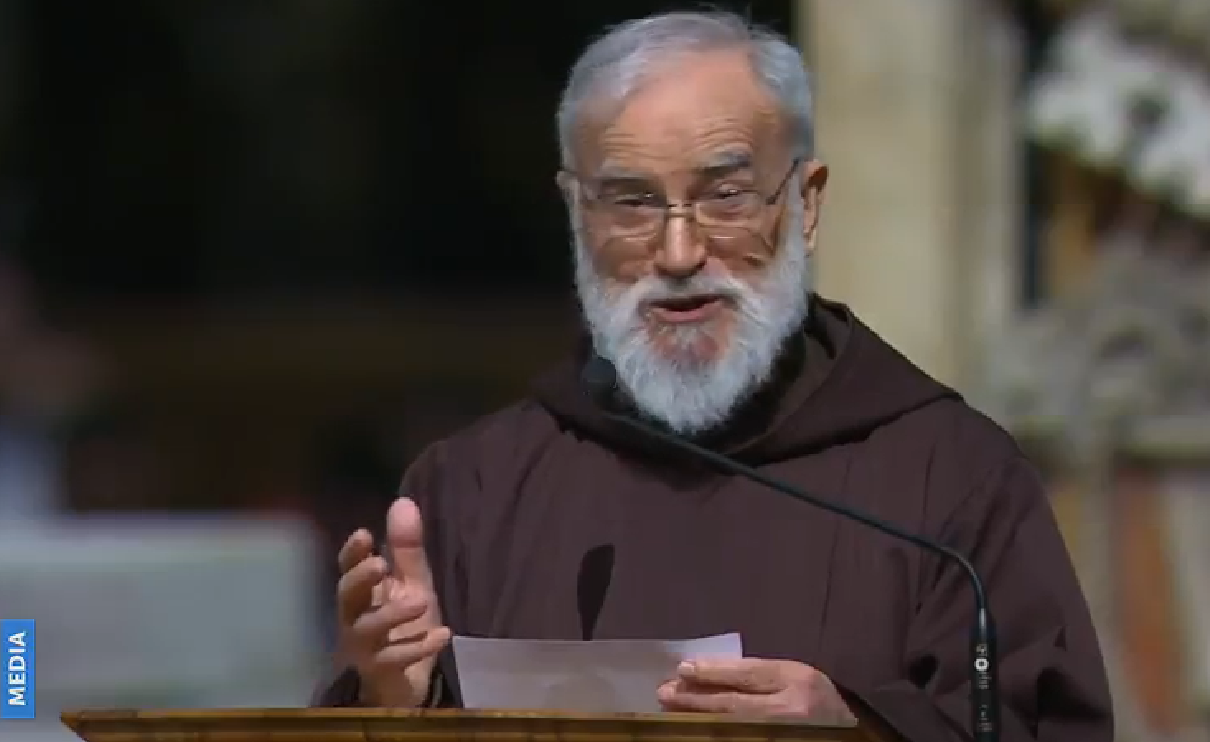“No one could convince us that this solemn attestation does not correspond to historical truth, that the one who says he was there and saw it was really not there and did not see it,” said Capuchin Father Raniero Cantalamessa, the preacher of the Pontifical Household. “What is at stake, in this case, is the honesty of the author. On Calvary, at the foot of the cross, was the mother of Jesus and next to her, ‘the disciple whom Jesus loved.’ We have the testimony of an eye-witness!”
 His affirmation of faith came on Good Friday, March 30, 2018, in his homily during the Celebration of the Passion of the Lord in St. Peter’s Basilica, presided over by Pope Francis.
His affirmation of faith came on Good Friday, March 30, 2018, in his homily during the Celebration of the Passion of the Lord in St. Peter’s Basilica, presided over by Pope Francis.
Why such “unbounded” attention to the cross of Christ? Why is this symbol “omnipresent” in every Christian place?
Fr. Cantalamessa answers: “On the cross, God reveals himself…himself as he really is, in his most intimate and truest reality. ‘God is love,”’ John writes (1 Jn 4:10), oblative love, a love that consists in self-giving, and only on the cross does God’s infinite capacity for self-gift manifest the length to which it will go.”
Reminding the congregation that the Church will hold a Synod on Young People this year, Fr. Cantalamessa pointed out that the apostle John likely joined Jesus when he was quite young and his presence on Calvary may have a special message for today’s youth.
“It was a real falling in love,” Fr. Cantalamessa explained. “Everything else suddenly took second place. It was a ‘personal,’ existential encounter. Whereas at the center of Paul’s thinking is the work of Jesus—his paschal mystery of death and resurrection—at the center of John’s thinking is the being, the person, of Jesus. This is the source of all the ‘I am’ statements with divine resonance that punctuate his Gospel: ‘I am the way, the truth, and the life’; ‘I am the door’; simply ‘I am.’
“It is appropriate during this year that we make an effort to discover together with young people what Christ expects from them, what they can offer the Church and society. The most important thing, however, is something else: it is to help young people understand what Jesus has to offer them.”
John not only offered the example of his life but left a message directly aimed at young people, Father continued. The message comes in John’s first letter, from an elder John to young people in the churches he founded:
 I write to you, young men because you are strong, and the word of God abides in you, and you have overcome the evil one. Do not love the world or the things in the world. (1 Jn 2:14-15)
I write to you, young men because you are strong, and the word of God abides in you, and you have overcome the evil one. Do not love the world or the things in the world. (1 Jn 2:14-15)
“The world that we must not love and to which we should not be conformed, as we know, is not the world created and loved by God or the people in the world whom we must always go out to meet, especially the poor and those at the lowest level of society,” Fr. Cantalamessa continued. “‘Blending in’ with this world of suffering and marginalization is, paradoxically, the best way of ‘separating’ ourselves from the world because it means going in the direction from which the world flees as much as it can. It means separating ourselves from the very principle that rules the world, self-centeredness.
“On the cross Jesus not only gave us an example of self-giving love carried to the extreme; he also merited the grace for us to be able to bring it to pass, to some extent, in our lives. The water and blood that flowed from his side come to us today in the sacraments of the Church, in God’s word, and even in just looking at the Crucified One in faith. One last thing John saw prophetically at the cross: men and women of every time and place who were turning their gaze to ‘the one who was pierced’ and who wept tears of repentance and of consolation (see Jn 19:37 and Zac 12:10).”
THE FULL TEXT OF FR. CANTALAMESS’S HOMILY

© Vatican Media
Fr. Cantalamessa: The Truth of the Passion
“We have the Testimony of an Eye-Witness!”


